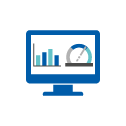City View Medical Practice is based in Beeston, Leeds, and is one of two sites owned by South and East Leeds General Practice, based in the southeast of Leeds. The combined sites provide medical services for up to 15,000 patients, with the City View Practice being the largest site.
Patient age profile versus the national average presents greater challenges than the average and the level of deprivation is also high versus the national average. As a result, City View Medical Practice experiences a greater than average demand on medical services.

Having recently adopted Redcentric’s hosted telephony solutions for all its users, and specific licenses for its patient support call handlers, City View Medical Practice has been able to deliver many service improvements made possible by the new solution.
It means when call demand is high, we can ask staff to login to the phone system and respond to patient calls quickly, to keep wait times as low as possible.
Benefits discussed in an interview with Steven Holt, Patient Support Manager, are described below.
The practice has adopted new licensing for staff to enable them to login separately. This has meant that rather than having just four phones for handling inbound calls, there are up to 13 phones which staff can use to login to the system and start handling calls.
Staff absence can be managed effectively by engaging other members of staff to login to the system and cover gaps in resources.
We have a large team of frontline and admin staff, including receptionists, admin, medical secretaries, and coders – they are all multi-skilled. Individual staff logins give us flexibility. It means when call demand is high, we can ask staff to login to the phone system and respond to patient calls quickly, to keep wait times as low as possible.
Call analytics and reporting has transformed the way calls are managed. It has given complete visibility of a wide variety of metrics: calls offered, calls by time of day, call wait times, calls abandoned and calls by types. This has enabled analysis and allowed continuous improvement of call workflows within the admin of the system to deliver efficiencies.
Our call stats have improved beyond recognition over the last 12 months. The beauty of the Redcentric system is we can carry on refining call flows. Call demand can change on a weekly basis, but the call stats help us to understand what’s going on and to see which call lines are busy, so that we can respond to changing patterns and resource lines effectively by getting additional staff to login to the system.
Smarter working – wall-mounted dashboards
Dashboards have given staff the ability to work smarter and manage their workload. The wallboard shows different types of calls, as well as metrics around wait times, abandon rates, and answered calls. Dashboards have influenced staff behaviours and help them to manage their time, so that they can make positive choices about when to login and handle calls and when is the right time to divert to other tasks or the best time to take a break. When call volumes are high, more staff can login to start to handle calls allowing for more flexible resourcing.
The staff appreciate how useful the dashboards can be. They feel they are able to manage their workloads better by seeing it and being able to decide when to complete other tasks. It empowers them to make decisions themselves.
Analysis of call volumes has allowed different call options to be set up to channel inbound calls towards different services. For example, seven different call lines now route calls to: appointments, vaccinations, home visits, prescriptions, sick notes, medical secretaries, and test results. This has resulted in improvements in call handling, effective staff management and improved response times.
Call prioritisation and resourcing – Call lines for setting medical appointments are prioritised and available from first thing in the morning. These calls are prioritised, while call lines for less urgent calls – about sick notes or test results open later in the morning. This has smoothed and balanced call volumes, with more staff allocated at peak times to handle calls and more effective resourcing of call lines which are ‘time-limited’ and scheduled for less busy times of day.
“Between 8 and 9 am, it’s all hands-on deck to respond to patient calls as soon as we possibly can. Generally, there are no calls queueing beyond 10 am which is a great improvement. By changing some of the call options we’ve levelled out call volumes and we’ve been able to look at what we can do to drive volumes in different directions, so we can resource lines effectively.”
Reduced complaints – Call routing and the prioritisation of urgent calls has driven down call queues and led to lower wait times for patients which has driven down complaints.
“Since we made the changes to call workflows on our telephony, the number of complaints has dropped significantly. Complaints about call waiting times are now very rare.”
Recorded messaging by call type increases efficiency – Recorded messages on the telephone system have encouraged patients to input requests online where practical, ordering prescriptions, registering new patients, requesting sick notes etc.
Online services have sped up workflows and reduced the room for error – For example, requesting prescriptions online takes around 15-20 seconds, compared to an average time of three minutes when done over the phone. Relevant information can be displayed to the patient, which enables self-selection and avoids repetition of information over the phone.
This speeds up ordering for both patients (with positive impacts on call wait times and call demand), improves accuracy and efficiency and reduces time spent on the phone by staff, freeing them up to handle other calls. Staff utilisation has changed as a result, with an increased number of administrators having been employed to handle online requests as a result.
“Requests made online are easier to handle; it’s a much smoother process and it’s easier to key through the details to the relevant area of the practice.”
Effective utilisation of staff – New staff can be allocated to handle a specific type of call while they continue to train and build their knowledge and expertise. The practice can now route different types of calls to existing staff based on their experience and call handling strengths.
“Previously a new member of staff would pick the phone up and not know what type of call was coming through. Now we can set them up to handle just one specific call type so they can focus on that skill until they gain experience. We don’t need to flood them with everything, until they’re ready. It’s better for new staff, and better for patients.”
Staff recruitment and retention – Call analytics recently provided call handling data which enabled a business case to be made to recruit more part-time staff to resource peak call times and reduce call queues and wait times. This benefits patients and reduces pressure on practice staff which in turn supports better staff retention.
“We were able to generate a business case based on the call data and get approval to employ part-time staff to cover the biggest spike in calls during the day. I now have the flexibility to allocate staff to where the demand is.”
Complaint handling – Recordings provide governance, and they are easily accessible to staff, enabling them to check details of recorded conversations. Practice staff can examine how patient consultations have been handled in the event of an error or a patient complaint. It enables issues to be quickly resolved, and reinforces best practice with staff.
“The call recording is a brilliant tool, especially from a patient complaint perspective. You can listen to what’s been said and what’s been done. You can act on fact.”
Staff training – As a training surgery, City View has trainee registrars and GPs are their mentors. The call recordings give GPs the facility to listen to consultations done over the phone and provide further guidance where needed.
For the wider receptionist and admin team, individual logins mean staff performance can be monitored and training needs can be identified. Call recordings can then be used as ‘best practice’ examples to support staff with their training.
“From a staff training point of view, the call recording is a very useful tool which has a very positive effect. Supervisors can listen to calls; we can identify training needs and support staff a lot more with coaching and best practice. It’s now used every day.”
We were able to generate a business case based on the call data and get approval to employ part-time staff to cover the biggest spike in calls during the day. I now have the flexibility to allocate staff to where the demand is.
Greater flexibility – Flexible staffing for call handling via individual staff logins.
Improved staff utilisation – Improved management information enables continuous improvement of call workflows via the admin portal and data is used to improve resourcing.
Smarter working and empowerment of staff – Dashboards give all staff visibility of patient demand and enable self-management.
Increased efficiency through patient use of online services – messaging which directs patients to handle tasks online is creating efficiencies for both patients and staff and reducing pressure on inbound call lines.
Effective governance and complaint handling – the ease of access to recordings enables validation of calls
Improved staff training, support and spread of best practice – call recordings can be used to monitor and support staff with best practice.
Call handling efficiencies and faster response times for patients
Call routing has improved the utilisation of staff and prioritisation of calls, as well as enabling more calls to be channelled towards online services. Call analytics (presented in Appendix 1) show that for City View Medical Practice:

